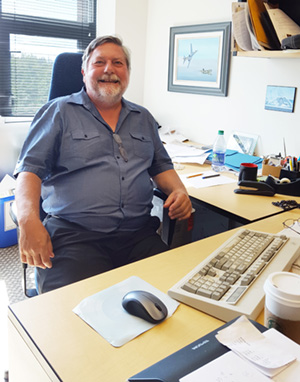By  Jenny Chik, Postdoctoral Fellow in the Foster lab
Jenny Chik, Postdoctoral Fellow in the Foster lab
The UBC Centre for Blood Research (CBR) was founded in 2002. Recently, we interviewed Professor Ross MacGillivray, one of the founding members of CBR on his reflections about its past, present and future. The interview has been trimmed for conciseness and clarity.
What is the CBR trying to accomplish? The CBR was started to try and take advantage of new opportunities in funding that came about at the turn of the millennium. Dana Devine, Grant Mauk, Don Brooks, Charles Haynes and I got together and thought we should get contiguous space for people at UBC who were working in the general blood area so that we could work together more efficiently.
What was your dream for the CBR in the first 10-15 years? The original dream was to advance transfusion science, particularly with blood products. We have advanced that quite well. Some of the collaborations in CBR have been wonderful and definitely wouldn’t have happened without moving into this building. If you look at the academic productivity of the CBR, it has exceeded what we had hoped for when we first came into the building.
 Do you think the mission of the CBR has altered during its existence? Absolutely. It has changed a bit since I stepped down as director. We deliberately recruited Ed Conway who was a clinician-scientist, and there were two things that we really wanted to achieve in our 2008 Strategic Plan: we needed collaborations with clinical departments and we needed more fundraising from individual donors and pharmaceutical companies. Ed Conway has really developed the CBR along these lines beyond our wildest dreams. Because of that, we’ve also changed our mission a little bit so it’s not restricted to transfusion science, but it also involves immunity & infection, biomarkers as well as haemostatic balance.
Do you think the mission of the CBR has altered during its existence? Absolutely. It has changed a bit since I stepped down as director. We deliberately recruited Ed Conway who was a clinician-scientist, and there were two things that we really wanted to achieve in our 2008 Strategic Plan: we needed collaborations with clinical departments and we needed more fundraising from individual donors and pharmaceutical companies. Ed Conway has really developed the CBR along these lines beyond our wildest dreams. Because of that, we’ve also changed our mission a little bit so it’s not restricted to transfusion science, but it also involves immunity & infection, biomarkers as well as haemostatic balance.
How does the role of being a Director of the Centre impact on your academic career? I was very fortunate in that there were two people in my lab – Jeff Hewitt and Val Smith who were both with me before we moved here. Having those two people in my lab really helped maintain research directions and progress with new techniques. They made the whole difference so that I could spend time on administrative work as well as enjoy doing my own research.
How does the CBR compare with other Blood research institutions in Canada and the world? We are unique in that we have a collection of clinician-scientists and scientists working in the blood area. But in addition to that, we have had sociologists, dentists and engineers. So that separates us from other blood research centres in the world that tend to just concentrate on biomedical research.
If you could name one achievement of the CBR that you are most proud of, what would that be? The fact that we set up the Centre and we are now recognised as a national and international centre of excellence in blood research is a great accomplishment – especially as it came from scratch.
What do you envision to be the future of the CBR? I would like to see Ed Conway’s second term completed with closer relationships with the clinicians. I would like to see two or three assistant professors come in to the CBR space to replace people who have retired and thus maintain the research that we have going. And I would like to see the CBR have more stable funding so that we can continue working on the blood area as a recognised centre. Each of those has their own challenges but they are challenges that we can certainly meet.
Do you have any final comments to add? I think it’s been a wonderful experience. We can all be proud of the research and educational aspects that we’ve developed over the last 15 years in the Life Sciences Centre.
We would like to thank Professor Ross MacGillivray for his time dedicated to the interview.


